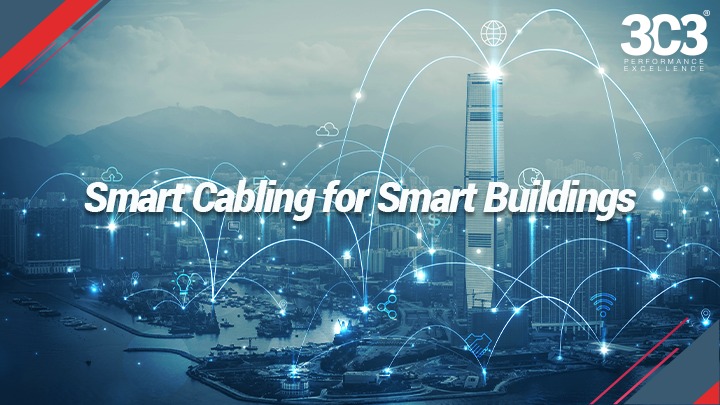Smart Cabling for Smart Buildings
As a result of COVID and the pandemic, there is a need to
protect ourselves and our communities. We create a community
with the help of technology that supports people in buildings.
Although many commercial buildings are currently “closed”, many
facilities must be kept working, regardless of or mainly because
of this crisis. Many of these buildings run at least on average
or above-average capacity with a high number of occupants. At
the same time, some buildings are fully operational but almost
empty.
As a result of COVID and the pandemic, there is a need to
protect ourselves and our communities. We create a community
with the help of technology that supports people in buildings.
Although many commercial buildings are currently “closed”, many
facilities must be kept working, regardless of or mainly because
of this crisis. Many of these buildings run at least on average
or above-average capacity with a high number of occupants. At
the same time, some buildings are fully operational but almost
empty.
Applications in an intelligent building system
include:
Access Control
Audio, Video, Multimedia,
Broadband
CCTV and CATV
Digital Signage
Elevator
Control
Energy Management
Sensors
Actuators and
Controls
HVAC Control
Infant Security
Intercom
Medical
Gas Alarms Safety System and Displays
Personnel
Monitoring
Staff Emergency Alarms
Time and
Attendance
Visual Information Display
The above are just among the many applications and intelligent
building systems can include. As the intelligent/Smart building
systems expand and the Internet of Things (IoT) continues to
explode, more devices will require network connectivity. Now the
designers and installers should think outside of the box in
selecting the appropriate cabling infrastructure to address the
application requirements and endpoints specifically.
The standards ISO/IEC11801-6 and EN50173-6 specify the
underlying technical conditions for the digital ceiling.
TIA-862-B, ANSI/TIA-862-A specifies that the minimum
requirements for smart building cabling to support applications
and systems that use IP communication while accommodating other
protocols are typically used between devices. ISO/IEC 60950
Safety Extra Low Voltage (SELV) standard also needs to be taken
into consideration to limit power to 100 W per port (similar to
US NEC class 2 circuit).
Single Pair Ethernet (SPE) is available on the market from 2020.
A lightweight, slim-line cable with a single twisted pair and
small connectors will extend the local data network. SPE enables
the use of manufacturer-neutral, inexpensive network technology.
By the year 2025, it’s foreseen that there will be over
seventy-five billion devices connected to networks around the
globe. These can range from sensors to even robots. The
intrinsic value for loT and OT is in data collection -
specifically, in how this data can help building owners,
occupants and operators improve the operational efficiency,
enhance user experience and drive better return on investment
from these spaces.
Single Pair Ethernet (SPE) is available on the market from 2020.
A lightweight, slim-line cable with a single twisted pair and
small connectors will extend the local data network. SPE enables
the use of manufacturer-neutral, inexpensive network technology.
By the year 2025, it’s foreseen that there will be over
seventy-five billion devices connected to networks around the
globe. These can range from sensors to even robots. The
intrinsic value for loT and OT is in data collection -
specifically, in how this data can help building owners,
occupants and operators improve the operational efficiency,
enhance user experience and drive better return on investment
from these spaces.
